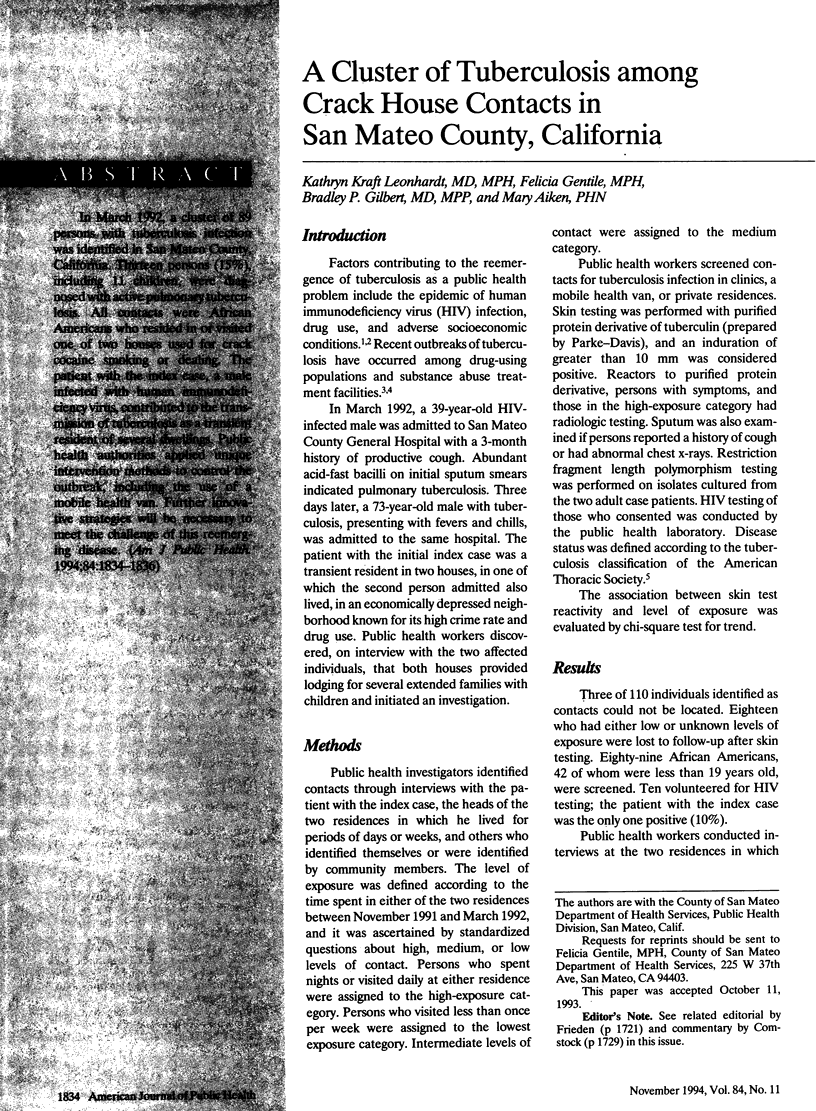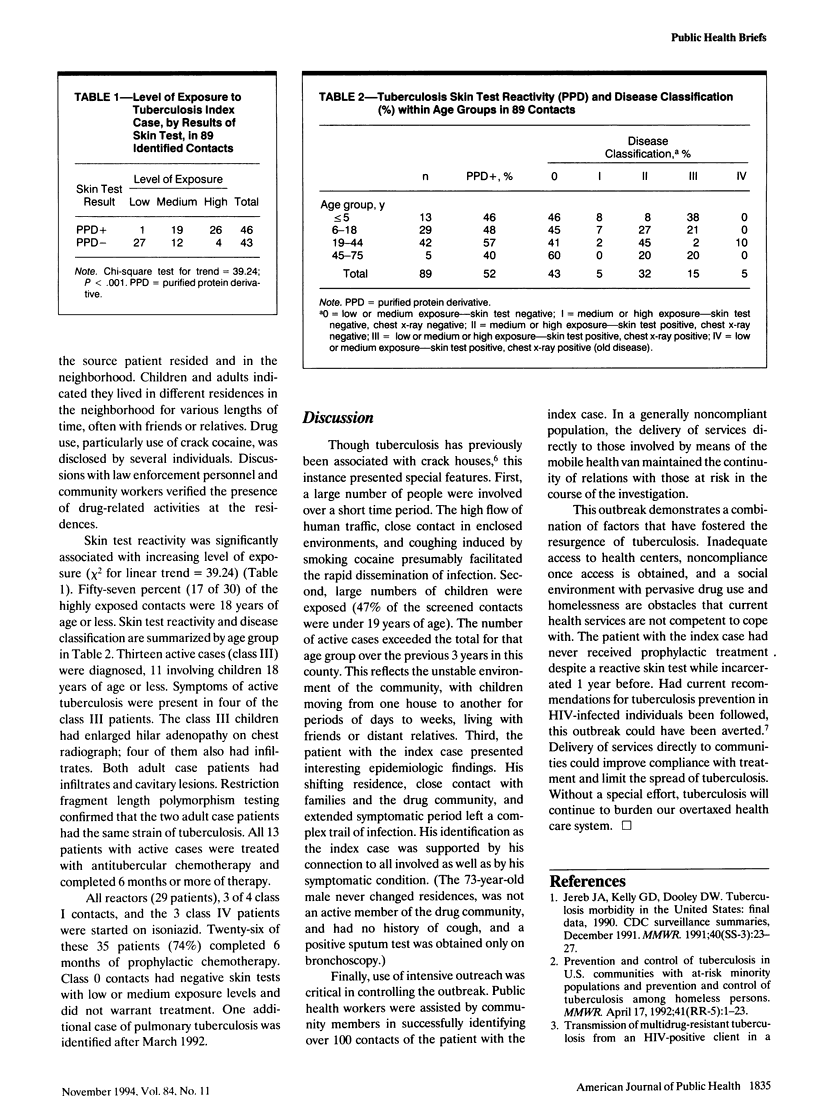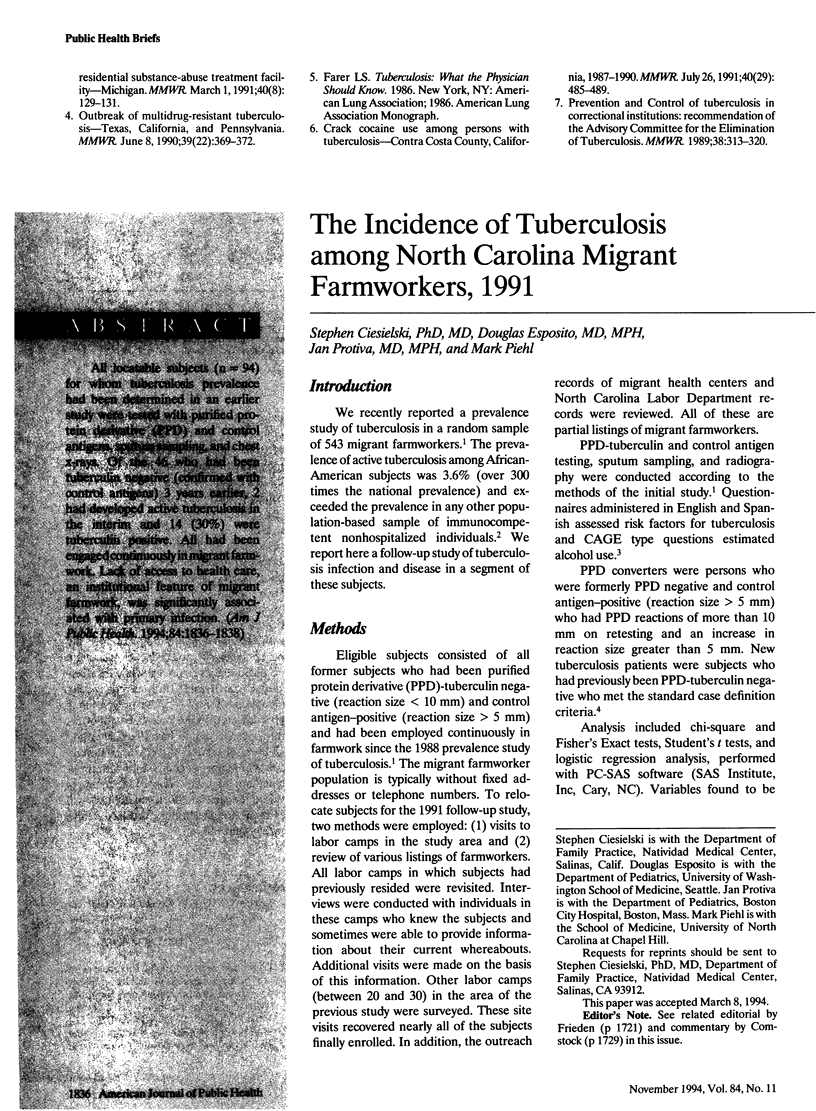Abstract
In March 1992, a cluster of 89 persons with tuberculosis infection was identified in San Mateo County, California. Thirteen persons (15%), including 11 children, were diagnosed with active pulmonary tuberculosis. All contacts were African Americans who resided in or visited one of two houses used for crack cocaine smoking or dealing. The patient with the index case, a male infected with human immunodeficiency virus, contributed to the transmission of tuberculosis as a transient resident of several dwellings. Public health authorities applied unique intervention methods to control the outbreak, including the use of a mobile health van. Further innovative strategies will be necessary to meet the challenge of this reemerging disease.
Full text
PDF


Selected References
These references are in PubMed. This may not be the complete list of references from this article.
- Jereb J. A., Kelly G. D., Dooley S. W., Jr, Cauthen G. M., Snider D. E., Jr Tuberculosis morbidity in the United States: final data, 1990. MMWR CDC Surveill Summ. 1991 Dec;40(3):23–27. [PubMed] [Google Scholar]
- Witkin S. S., Richards J. M., Bongiovanni A. M., Zelikovsky G. An IgG-Fc binding protein in seminal fluid. Am J Reprod Immunol. 1983 Jan-Feb;3(1):23–27. doi: 10.1111/j.1600-0897.1983.tb00207.x. [DOI] [PubMed] [Google Scholar]


